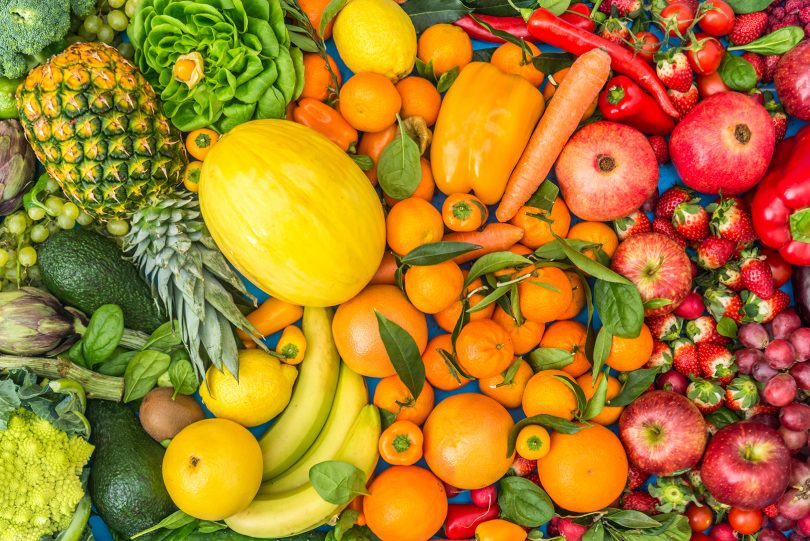Listed below are the different colors of the rainbow and the foods that are associated with that color. Additionally, nutrients provided by these foods are listed underneath.
Red:
- Tomatoes, kidney beans, strawberries, raspberries, watermelon, pink grapefruit, cranberries, red apples, red grapes, red pepper
- Vitamin C, Vitamin A, Potassium
Orange:
- Carrots, sweet potatoes, winter squash, cantaloupe, peaches, mangoes, oranges
- Vitamin C, Vitamin A, Potassium
Yellow:
- Yellow summer squash, corn, pineapple, lemons, yellow pepper
- Vitamin C, Vitamin A, Potassium
Green:
- Zucchini, cucumbers, asparagus, artichokes, limes, green grapes, green apples, kiwi, cabbage, broccoli, spinach, brussels sprouts, kale, beet greens, turnip greens, collard greens
- Vitamin K, fiber
Blue and purple:
- Beets, purple eggplant, purple grapes, blueberries
- Vitamin C, Fiber
White:
- Onions, garlic, mushrooms, cauliflower, potatoes
- Anti-inflammatory
Brown:
- Cinnamon, nuts, brown rice, whole wheat, other whole grains, flax seed, chocolate, coffee, tea
- Anti-inflammatory
It is recommended that half of your plate contains fruit and vegetables to reach the suggested daily intake of 1.5-2 cups of fruit and 2-3 cups of vegetables. Meal planning is a great way to ensure you are consuming at least 2 different colors per meal to have a variety of phytochemicals in your diet. Now that you have read about why “Eating the Rainbow” is important, here is a sample 1 day color-packed menu to help you get started on meal planning:
- Breakfast: southwest vegetable frittata (contains red pepper and onion) with a sliced green apple on the side
- Lunch: chicken stir fry that has broccoli, yellow pepper, carrots in it
- Dinner: baked salmon with roasted butternut squash and Brussels sprouts with a side of raspberries and blueberries.
- Snack: cup of Greek yogurt with sliced peaches


